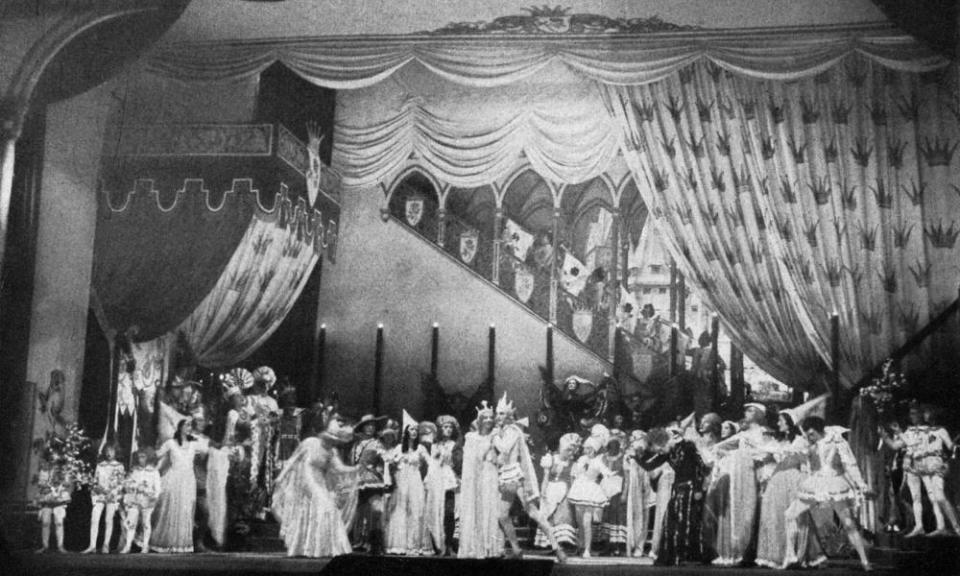Kilometre house: how dance pioneer Rudolf Laban dreamed of staging performances in a gigantic dome

He was one of the 20th century’s foremost pioneers of modern dance, bringing together communities with large-scale public performances. Now his previously unpublished writings reveal that Rudolf Laban’s ambitious vision for the art form extended to wanting to construct a theatre specifically designed for dance.
In an essay that has been unearthed some 65 years after his death, Laban wrote of his “dream” to stage dance in a “kilometre house” – a gigantic dome in the middle of the countryside, “a sort of oasis of movement for spectators and cast members alike” because existing theatres did not do justice to dance. He felt that audiences at the back of conventional theatres missed so much: “Even in a theatre in the shape of an amphitheatre, the spectators in the furthermost rows will be so far away from the stage that, although they will be able to get a good overview of the whole picture of the stage, [they] will hardly be able to differentiate the details of the movement, the limbs and the lines in space.”

He added: “This difficulty could perhaps be overcome if one built a dome over the whole stage in the shape of a circle so that one could put the spectators up around the dome so that the upper rows, even though they would have a bird’s eye [view] of the stage, would at least be able to see the whole of the stage and each spectator would be the same distance from the centre point of the stage.”
He continued: “In our usual theatres … the delicacy of gesture is substantially lost the further one is from the stage. On the other hand, the spectator who sits quite near the front can see the tiniest detail all too clearly and yet has very little overview of the general sphere of action.”
The essay extends to more than 18,000 words. Why it was never published is unclear. It has been in the Brotherton Library, University of Leeds, along with most of the material that will feature in the book The Art of Movement: Rudolf Laban’s Unpublished Writings, to be published by Routledge on 14 December.
Its editor is Dr Dick McCaw, reader in performance practices at Royal Holloway, University of London.
The book explores Laban as a choreographer, teacher, pioneer of notation and organiser of dance congresses, reflecting that while he promoted professional dance for the spectator, he was equally passionate about dance as a form to be practised by everyone.
He once wrote: “Every person carries a dancer within him. There is no wisdom, no feeling, no form change, no movement, in a word, nothing which is not experienced as a gesture.”

Laban was appointed mâitre de ballet at the Berlin State Opera in 1930. When Hitler came to power in 1933, he remained in Germany and continued to teach, organise and create dance. After Joseph Goebbels, minister for propaganda, saw Laban’s proposed ceremony to open the stadium for the 1936 Berlin Olympic Games, the performance was cancelled and Laban fell into immediate disgrace, escaping from Germany in 1937. He arrived in Britain, where he organised dance courses during the 1940s and 50s.
McCaw said of the kilometre house: “If you think of some of the massive pageants that he did – for example, what he did in Vienna in 1929 animated all of Vienna – all of them were pretty huge affairs. A huge structure would have allowed him to do open-air events without the risk of them being cancelled because of rain.
“Laban had a huge influence in England in the 1950s and 60s. He was championed by Joan Littlewood and Ewan MacColl. His ideas about movement are still used in many drama schools.
“He worked with women in factories during the second world war, achieving higher output not through time and motion studies but a method based on each worker’s individual way of moving – a much more humane approach. His ideas about movement education were taken up throughout the English education system.”
The Brotherton archive includes interviews conducted by John Hodgson, a drama teacher, in the 1970s and 80s with key figures who worked with Laban in Germany and Switzerland, and later in England. He intended to write Laban’s biography, but after 25 years of research, it remained unfinished at his death in 1997.
The interviewees included Martin Gleisner, who collaborated with Laban on public dance events, and who recalled that Laban was so interested in anatomy that he even “assisted” a surgeon in medical operations so that he could observe the inner workings of the human body.


